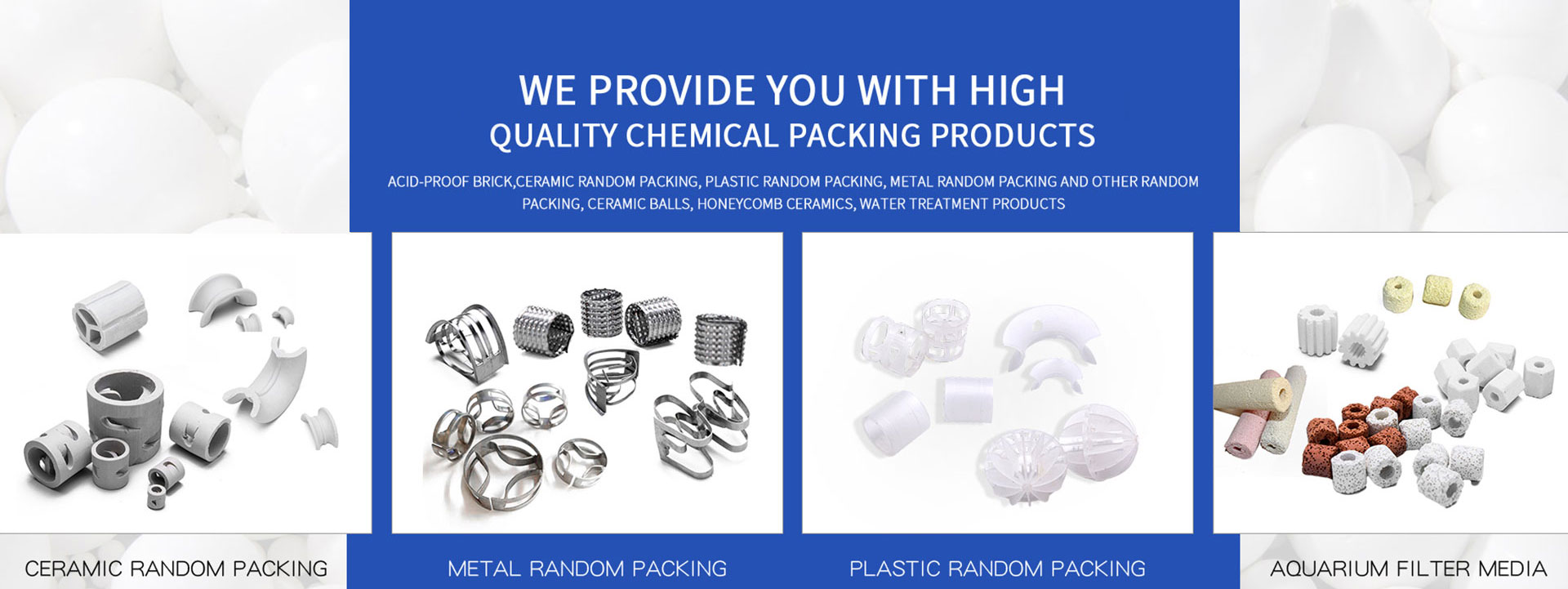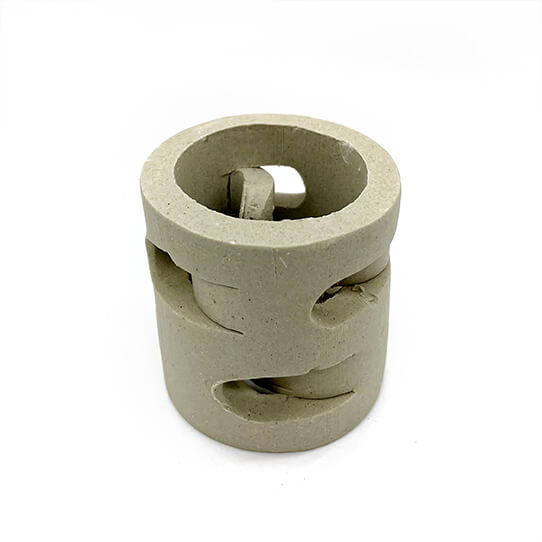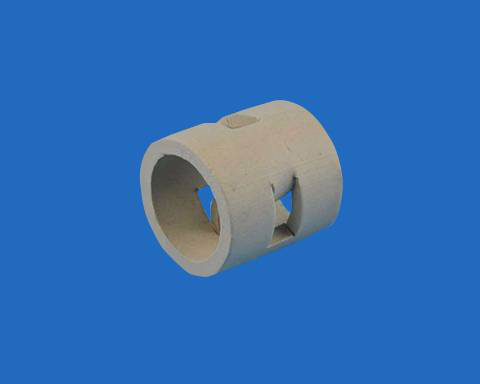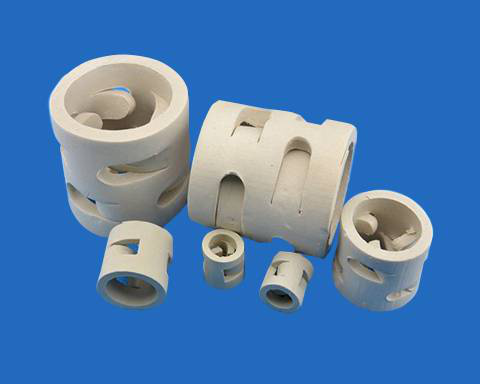


Ceramic Pall Ring – Advanced Products of Raschig Ring
Ceramic Pall ring is the advanced products of ceramic Raschig ring. Compared with ceramic Raschig ring, there are two layers of window on the cylinder wall. And each layer has five ligules bending inward.
This design makes the surface area and voidage be improved and the porosity be evenly distributed. Additional, it has greater capacity and lower pressure drop than ceramic raschig ring.
Quick Details

CPRP-01: Windows are added on the cylinder wall.

CPRP-02: Different sizes are supplied and custom order are also available.
Material:
Made from high-quality ceramic materials such as alumina, silica, or clay, which provide excellent chemical resistance, thermal stability, and mechanical strength.
Suitable for use in corrosive and high-temperature environments.
Design:
The Pall Ring features a cylindrical shape with windows (holes) and inwardly curved tabs.
This design increases the surface area for gas-liquid contact and improves fluid distribution.
Efficiency:
Offers higher mass transfer efficiency compared to Raschig Rings due to its optimized geometry.
Reduces channeling and improves liquid distribution in the packed bed.
Low Pressure Drop:
The open structure minimizes resistance to gas and liquid flow, resulting in a lower pressure drop.
High Capacity:
Can handle higher flow rates due to its improved design.
Improved Performance:
Higher surface area and void fraction enhance mass transfer efficiency.
Lower Pressure Drop:
Reduced resistance to flow improves energy efficiency.
Better Liquid Distribution:
The curved tabs and windows promote even distribution of liquids, reducing channeling.
Durability:
Ceramic materials provide excellent resistance to corrosion, high temperatures, and mechanical wear.
Cost-Effectiveness:
Despite being more advanced, Ceramic Pall Rings offer long-term savings due to their durability and efficiency.
Chemical Industry:
Used in distillation columns, absorption towers, and stripping columns.
Petrochemical Industry:
Applied in gas scrubbing, sulfur recovery, and hydrocarbon processing.
Environmental Engineering:
Used in wastewater treatment and air pollution control systems.
Pharmaceutical Industry:
Utilized in solvent recovery and purification processes.
| Feature | Ceramic Pall Ring | Raschig Ring |
|---|---|---|
| Design | Cylindrical with windows and curved tabs | Simple cylindrical shape |
| Surface Area | Higher | Lower |
| Void Fraction | Higher | Lower |
| Pressure Drop | Lower | Higher |
| Mass Transfer Efficiency | Higher | Lower |
| Liquid Distribution | Better | Poorer |
| Durability | Excellent (corrosion and temperature resistant) | Good, but less durable in harsh conditions |
Installation:
Ceramic Pall Rings are randomly packed into columns or towers.
Ensure proper distribution to avoid channeling and maximize efficiency.
Maintenance:
Regularly inspect for fouling or blockage, especially in applications with high particulate content.
Clean or replace rings as needed to maintain performance.
Features & Benefits
• Excellent heat and acid resistance.
• Higher capacity.
• Lower pressure drop.
• Evenly distributed porosity and fluid.
Applications
• Ceramic pall ring can be used in high or low temperature conditions.
• It can be used in the drying columns, absorbing columns, cooling towers, scrubbing towers in chemical industry, metallurgy industry, coal gas industry, oxygen producing industries, etc.
Chemical properties of Ceramic Pall Ring | |||
SiO2+ Al2O3 | > 92% | CaO | < 1.0% |
SiO2 | > 76% | MgO | < 0.5% |
Al2O3 | > 17% | K2O + Na2O | < 3.5% |
Fe2O3 | < 1.0% | Other | < 1% |
Physical Properties of Ceramic Pall Ring | |||
Water Absorption | < 0.5% | Moh's Hardness | > 6.5 scale |
Porosity | < 1% | Acid Resistance | > 99.6% |
Specific Gravity | 2.3–2.4 g/cm3 | Alkali Resistance | > 85% |
Max. Operation Temp. | 1200 °C | ||
Common Specifications of Ceramic Pall Ring | ||||||
Item | Diameter | Thickness | Surface Area | Free Volume | Number | Bulk Density |
CPR-01 | 25 | 3 | 210 | 73 | 53500 | 700 |
CPR-02 | 38 | 4 | 180 | 75 | 15000 | 650 |
CPR-03 | 50 | 5 | 130 | 78 | 6800 | 600 |
CPR-04 | 80 | 8 | 110 | 81 | 1950 | 550 |
<< Previous page
Next page >>